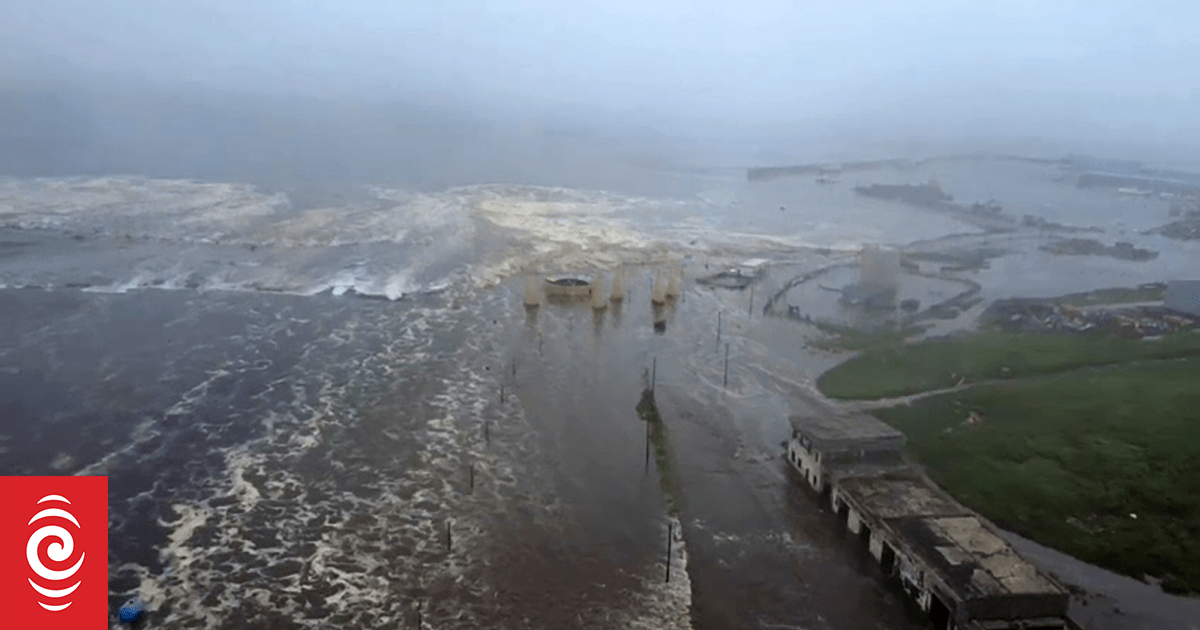This video grab from a drone handout footage released by Geophysical Service of the Russian Academy of Sciences on 30 July shows the tsunami-hit Severo-Kurilsk on Paramushir island of Russia’s northern Kuril islands.
Photo: AFP / Geophysical Service of the Russian Academy of Sciences
Authorities have been on alert for any dangerous tsumani activity overnight.
An 8.8 magnitude earthquake struck off Russia’s remote east coast on Wednesday, triggering tsunami waves on multiple country’s shores – including New Zealand, several Pacific nations, the US and Canadian coasts, and parts of South America.
The quake is tied for the sixth-strongest ever recorded, and the strongest since 2011, when a 9.0 magnitude earthquake hit northeast Japan, triggering a devastating tsunami.
The National Emergency Management Agency (NEMA) in its update on Wednesday morning said tsunami activity had reached parts of New Zealand.
It said the first currents and surges were unlikely to be the largest and were expected to continue over many hours.
NEMA said the threat must be regarded as real until it advised otherwise, however, it did not report any significant developments overnight.
Civil Defence Northland said the forecast tsunami activity in its region, expected at about 12am-1am, would coincide with high tide.
Further south, Bluff was not expected to see its earliest tsunami waves until at least 4.46 am.
Various online webcams, dotted along the country’s coasts and monitored by RNZ overnight, did not appear to reveal any damage – although daybreak could bring this to light.
Boaties were advised not to remain on their vessels. Auckland Emergency Management opened four Civil Defence Centres for people lived aboard and who did not have friends or family to stay with. The centres would remain open until 8am Thursday.
Auckland Emergency Management said two boaties spent the night at its Waikeke Island civil defence centre.
KiwiRail detoured some of its Cook Strait ferries overnight, adding about 40 minutes to three Interislander sailings.
It said the Marlborough harbourmaster had ordered all ferries travelling to Picton to use the Marlborough Sound’s northern entrance, instead of Tory Channel, from 10pm on Wednesday.
KiwiRail expected the harbourmaster would assess whether to re-open the channel at 6am Thursday.
Further afield, while many countries began to lift their tsunami warnings into the early hours of Thursday, others issued new ones.
As the threat to Japan, the Philippines, Russia, Papua New Guinea, Tonga, and Cook Islands eased, French Polynesia warned of waves as high as four metres, Colombia ordered evacuations along its Pacific coast and Chilean authorities issued a red alert for Easter Island.
The Ministry of Foreign Affairs said New Zealanders in affected areas should follow the advice of local authorities at all times, including any evacuation orders, and let family and friends in New Zealand know that they were safe.
Sign up for Ngā Pitopito Kōrero, a daily newsletter curated by our editors and delivered straight to your inbox every weekday.

